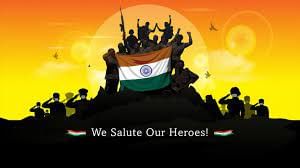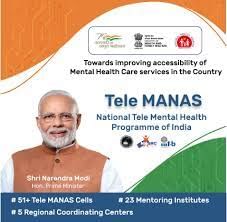UPSC Daily Current Affairs- 26th July 2023 | Current Affairs & Hindu Analysis: Daily, Weekly & Monthly PDF Download
GS-I
Kargil Vijay Diwas

Why in News?
The President and the Prime Minister recently paid their tributes to the armed forces on Kargil Vijay Diwas, acknowledging their extraordinary valour and the victory achieved.
About Kargil Vijay Diwas:
- It is celebrated on July 26 every year.
- The day commemorates the victory of the Indian armed forces in the Kargil War fought against Pakistan.
- The day is observed to pay tribute and honour the bravery and sacrifice of the soldiers in the war of 1999.
- The year 2023 marks the 24th anniversary of Kargil Vijay Diwas.
Key Facts about Kargil War:
- It was fought between India and Pakistan at the Line of Control (LoC)in the Kargil district of Jammu and Kashmir.
- Surprise Attack:
- The Kargil War was an unexpected intrusion by Pakistani forces into Indian territory.
- They occupied key vantage points in the Kargil region, leading to intense military engagements.
- Codename Operation Vijay: The Indian Army fought bravely and recaptured the famous 'Tiger Hill' and other important posts around under 'Operation Vijay' by evicting the Pakistani troops in the 1999 Kargil War.
- High Altitude Warfare: It was fought at extreme altitudes, with some of the battlegrounds reaching heights of over 18,000 feet.
- Duration: It lasted for approximately three months.
- Armaments:
- The Indian Army employed heavy artillery, air power as well as major infantry operations during the Kargil War.
- In a first, the Indian side used the Bofors FH-77B howitzers to shoot down enemy positions nested at top of the mountains.
- Israel provided their Unmanned Aerial Vehicles (UAVs) to India during the conflict.
- Live on TV: It was the first ever war to be broadcasted live on TV channels in India.
- The End of Conflict: The war came to an end on July 26, 1999, when India successfully pushed back the Pakistani forces from the occupied positions.
- Casualties: As per official figures, around 500 Indian soldiers laid down their lives while at least 1,000 Pakistani troops were also killed.
- It was the last war that happened between India and Pakistan.
Source: AIR
What is Panama Canal?
Why in News?
Panama Canal recently limited average crossings to 32 ships a day as a prolonged drought continues.
About Panama Canal:
- It is a constructed waterway that connects the Atlantic and Pacific oceans across the Isthmus of Panama.
- It is one of the two most strategic artificial waterways in the world, the other being the Suez Canal.
- It is approximately 80 kilometres long.
- The canal was built by the United States between 1904 and 1914, and it was officially opened on August 15, 1914.
- It is owned and administered by the Republic of Panama since the oversight of the Canal was transferred from the United States to Panama in 1999.
- The Panama Canal consists of a series of locks that raise and lower the water level to facilitate the passage of ships through the continental divide.
What is an Isthmus?
- An isthmus is a narrow strip of land connecting two larger land masses which is bounded by water on two sides.
- The word has its origins from the Greek word isthmós which means “neck.”
- Two notable isthmuses are the Isthmus of Panama which separates the continents of North America and South America and the Isthmus of Suez which divides Africa from Asia.
Source: The Print
GS-II
India Climate Energy Dashboard (ICED) 3.0

Why in News?
Recently, NITI Aayog released the India Climate Energy Dashboard (ICED) 3.0.
About India Climate Energy Dashboard (ICED) 3.0:-
- It is India’s one-stop platform for near real-time data on the energy sector, climate, and related economic datasets based on government-published sources.
- Developed by: NITI Aayog in collaboration with the energy and climate think-tank Vasudha Foundation.
- ICED provides Near Real-Time Data with in-built Analytics to track Climate Action Progress.
Salient Features of (ICED) 3.0:-
- It is developed as a user-friendly platform.
- It enables users to freely access and analyze datasets using an analytical engine.
- It will facilitate insights and enhance understanding of the energy and climate sectors.
- The Portal will draw insights from the available data parameters.
- This dashboard offers more than 500 parameters, over 2000 infographics, and a number of interactive visualizations, allowing users to gain a holistic understanding of India’s energy sector.
- The dashboard also offers information on economy and demography for comparative study and its combined analysis along with the energy and climate issues.
Source: PIB
Tele MANAS

Why in News?
The Tele Mental Health Assistance and Networking across States (Tele MANAS), helpline has reached a significant milestone.
Background:-
- Over 200,000 calls received on the Tele-MANAS Helpline since its launch in October 2022.
- Over 42 functional Tele MANAS Cells across 31 States and UTs, the service is currently catering to 1,300+ calls per day in 20 languages.
About Tele Mental Health Assistance and Networking across States (Tele MANAS):-
- Launched: 2022.
- Ministry: Ministry of Health & Family Welfare.
- Acknowledging the mental health crisis in the wake of the COVID-19 pandemic and an urgent need to establish a digital mental health network that will withstand the challenges amplified by the pandemic, the Government of India announced National Tele Mental Health Programme (NTMHP) in the Union Budget 2022-23.
Objectives of Tele MANAS:-
- To enable people to seek support for their mental health issues while maintaining the anonymity of the callers, thereby reducing the stigma generally surrounding mental health issues.
- To exponentially scale up the reach of mental health services to anybody who reaches out, across India, any time, by setting up a 24×7 tele-mental health facility in each of the States and UTs of the country
- To implement a full-fledged mental health-service network that, in addition to counselling, provides integrated medical and psychosocial interventions including video consultations with mental health specialists, e-prescriptions, follow-up services and linkages to in-person services.
- To extend services to vulnerable groups of the population and difficult-to-reach populations.
Salient Features of Tele MANAS:-
- Tele MANAS will be organized as a two-tier system.
- Tier 1: comprise the State Tele MANAS cells, which include trained counsellors and mental health specialists.
- Tier 2: comprise specialists at District Mental Health Programme (DMHP)/Medical College resources for physical consultation and/or e Sanjeevani for audio-visual consultation.
- Toll-free helpline numbers: 14416 or 1-800-891-4416 with multi-language provision allows callers to select the language of their choice for availing the services.
Eligibility:-
- Any individual with mental health issues can reach out to Tele MANAS services for help.
- Family members of persons with mental health issues can reach out for help.
- Grass-root health care providers/community health providerse., Accredited Social Health Activists (ASHAs), and community volunteers from the community can reach out to Tele MANAS on behalf of an individual or individuals in that community with mental health issues.
Source: PIB
GS-III
International Day for the Conservation of the Mangrove Ecosystem 2023

Why in News?
International Day for the Conservation of the Mangrove Ecosystem is celebrated every year on July 26.
About International Day for the Conservation of the Mangrove Ecosystem:
- It is celebrated every year on July 26.
- This International Day was adopted by the General Conference of the UN Educational, Scientific and Cultural Organization (UNESCO) in 2015.
- Purpose: To raise awareness of the importance of mangrove ecosystems as “a unique, special and vulnerable ecosystem” and to promote solutions for their sustainable management, conservation and uses.
What are Mangroves?
- Mangroves are unique coastal ecosystems found in tropical and subtropical regions around the world.
- They are characterized by dense, salt-tolerant trees and plants that thrive in the intertidal zones, where land and sea meet.
- They are typically found in sheltered coastal areas, estuaries, lagoons, and tidal flats, where they play a crucial role in maintaining the balance of the ecosystem.
- Some common species of mangrove trees include the Red Mangrove (Rhizophora spp.), Black Mangrove (Avicennia spp.), White Mangrove (Laguncularia racemosa), and the Buttonwood (Conocarpus erectus).
- Features:
- Respiratory or knee roots:
- They have specialized adaptations to cope with high salt levels in both the soil and water, such as unique root systems called "prop roots" or "pneumatophores" that help with gas exchange in waterlogged soils.
- They project above the mud and have small openings (lenticels) through which air enters, passing through the soft spongy tissue to the roots beneath the mud.
- They can survive extreme weather conditions and require low oxygen levels to survive.
- They cannot survive freezing temperatures and thus are found mainly in tropical and subtropical latitudes.
- Mangrove forests can store ten times more carbon per hectare than terrestrial forests.
- They can store carbon up to 400 per cent faster than land-based tropical rainforests.
- Mangroves improve water quality by filtering pollutants and trapping sediments from the land, and they reduce coastal erosion.
- Respiratory or knee roots:
Mangroves in India:
- India contributes to nearly half of the total mangrove cover in South Asia.
- According to the India State of Forest Report, 2021, the mangrove cover in India is 4,992 square km, which is 0.15 per cent of the country's total geographical area.
- West Bengal has the highest percentage of mangrove cover in India, mainly because it has Sundarbans, the largest mangrove forest in the world. It is followed by Gujarat and Andaman, and Nicobar Islands.
- Other states that have mangrove cover are Maharashtra, Odisha, Andhra Pradesh, Tamil Nadu, Goa and Kerala.
Source: The Hindu
Cyber security

Why in News?
Recently, the National Security Advisor (NSA) Ajit Doval participated in the Friends of BRICS meeting in Johannesburg and discussed the issue of cyber security.
Background:-
- In addition to BRICS, the Friends of BRICS countries, which participated, are Belarus, Burundi, Iran, UAE, Saudi Arabia, Egypt, Kazakhstan, and Cuba.
About Cyber security:-
- Cyber Security is protecting cyberspace including critical information infrastructure from cyberattacks, damage, misuse and economic espionage.
- A cyberattack is an attempt to gain illegal access to a computer system to cause damage.
- Mode of cyberattack: It can occur on any modern digital device.
- Impact: can range from an inconvenience for an individual to global economic and social disruption.
Common cyber threats:-
- Malware: It is any kind of software that is designed to cause damage to a single computer, server, or computer network.
- Examples: Ransomware, Spyware, Worms, viruses, and Trojans are all varieties of malware.
- Spoofing: Cybercriminals try impersonating a bank’s URL with a website that is quite similar to the original one and has similar functions as well.
- Phishing: it is attempting to obtain sensitive information such as credit card details, etc. for fraudulent activities, by disguising oneself as an authentic, trustworthy entity via electronic communication
- Denial of Service attacks: It is an attack meant to shut down a machine or network, making it inaccessible to its intended users.
- Man-in-the-middle (MitM) attacks: They occur when attackers insert themselves into a two-party transaction.
- Once the attackers interrupt the traffic, they can filter and steal data.
- Structured Query Language (SQL) Injection: SQL stands for a programming language used to communicate with databases.
- Many of the servers that store critical data for websites and services use SQL to manage the data in their databases.
- A SQL injection attack specifically targets such kinds of servers, using malicious code to get the server to divulge information it normally would not.
Need for Cyber Security:-
- Others can inappropriately use for Individuals Photos, videos and other personal information shared by an individual on social networking sites.
- This can further lead to serious and even life-threatening incidents.
- For Business Organizations: Companies have a lot of data and information on their systems.
- A cyber-attack may lead to loss of competitive information (such as patents or original work) and loss of employees’/customers’ private data.
- This may result in a complete loss of public trust in the integrity of the organization.
- For Government: A local, state or central government maintains a huge amount of confidential data related to the country and its citizens.
- Unauthorized access to the data can lead to serious threats to national security.
International Mechanisms for Cybersecurity:-
- The International Telecommunication Union (ITU): plays a leading role in cyber security issues.
- ITU: a specialized agency within the United Nations with a role of standardization and development of telecommunications and dealing with cyber security issues.
- Budapest Convention on Cybercrime: It is an international treaty that seeks to address Internet and computer crime (cybercrime) by harmonizing national laws, improving investigative techniques, and increasing cooperation among nations.
- It came into force in
- India is not a signatory to this convention.
- Internet Governance Forum (IGF): It brings together all stakeholders i.e. government, private sector and civil society on the Internet governance debate.
- It was first convened in October–November 2006.
- Internet Corporation for Assigned Names and Numbers (ICANN): It is a non-profit organization responsible for coordinating the maintenance and procedures of several databases related to the namespaces and numerical spaces of the Internet, ensuring the network’s stable and secure operation.
- HQ: Los Angeles, U.S.A.
Cyber Security Laws in India:-
- Information Technology Act, 2000: The act regulates the use of computers, computer systems, computer networks and also data and information in electronic format.
- The act lists the following as offences:-
- Tampering with computer source documents.
- Hacking with a computer system.
- Act of cyber terrorisme. accessing a protected system with the intention of threatening the unity, integrity, sovereignty or security of a country.
- Cheating using computer resources
- Strategies under National Cyber Policy, 2013: For creating mechanisms for security threats and responses to the same through national systems and processes.
- National Computer Emergency Response Team (CERT-in): functions as the nodal agency for coordination of all cyber security efforts, emergency responses, and crisis management.
- National Critical Information Infrastructure Protection Centre (NCIIPC): nodal agency for the protection and resilience of critical information infrastructure.
- It has been created under the Information Technology Act, of 2000.
- Objective: to secure India’s critical information infrastructure.
- HQ: New Delhi.
Challenges in Cyber Security in India:-
- Increased use of mobile technology and internet by people.
- Proliferation of the Internet of Things (IoT) without a proper security infrastructure.
- Lack of awareness on Cyber security.
- Lack of Cyber security specialists.
- Increased use of cyberspace by terrorists.
Recent Steps Taken by Government:-
- Cyber Surakshit Bharat Initiative:-
- Launched: 2018.
- Objective: to spread awareness about cybercrime and build capacity for safety measures for Chief Information Security Officers (CISOs) and frontline IT staff across all government departments.
- National Cyber Security Coordination Centre (NCCC):
- Launched: 2017.
- Objective: to scan internet traffic and communication metadata.
- Cyber Swachhta Kendra:
- Launched: 2017.
- Objective: this platform was introduced for internet users to clean their computers and devices by wiping out viruses and malware.
- Information Security Education and Awareness Project (ISEA): a project to raise awareness and to provide research, education and training in the field of Information Security.
Source: AIR
Controlled Human Infection Studies (CHIS) in India

Why in News?
India has taken its first step towards introducing Controlled Human Infection Studies (CHIS), a research model widely used in other countries for vaccine and treatment development.
- The Indian Council of Medical Research’s (ICMR) Bioethics Unit has prepared a consensus policy statement open for public comment, addressing the need, benefits, and ethical challenges associated with CHIS.
What is Controlled Human Infection Studies (CHIS)?
- CHIS also known as human challenge trials, are scientific studies conducted to deliberately expose healthy human volunteers to infectious agents under controlled conditions.
- The primary objective of these studies is to gain a better understanding of the pathogens’ behavior, human immune response, and to test potential vaccines, treatments, or preventive measures against the infection.
Key points about Controlled Human Infection Studies (CHIS) include:
- Informed Consent: Volunteers participating in CHIS must provide informed consent, fully understanding the potential risks and benefits associated with their participation.
- Types of Pathogens: CHIS can be used to study various infectious agents, such as viruses (e.g., influenza, dengue, Zika), bacteria (e.g., cholera, typhoid), and parasites (e.g., malaria).
- Vaccine Development: CHIS plays a crucial role in vaccine development by providing controlled environments to assess the efficacy of candidate vaccines and their ability to induce protective immune responses.
- Controversy: The use of CHIS has sparked ethical debates about balancing potential risks to participants against potential benefits to public health.
Ethical Concerns Surrounding CHIS in India
- Delicate Ethical Balance: CHIS is considered ethically sensitive due to concerns about deliberate harm to participants, fair compensation, third-party risks, and withdrawal from the study, and involving vulnerable participants.
- Streamlined Ethics Review: ICMR acknowledges the need for a specialized ethics review process with additional oversight and safeguards to protect study participants.
- Deterrents and Unique Context: Technical, clinical, ethical, and legal challenges deterred India from adopting CHIS earlier, partly influenced by the nation’s unique socio-cultural context.
Potential Benefits of CHIS in India
- High Disease Burden: India faces a significant burden of morbidity and mortality from infectious diseases, contributing about 30% of the disease burden in the country.
- Novel Insights and Efficiency: CHIS offers unique insights into disease pathogenesis and enables accelerated and cost-effective outcomes with smaller sample sizes compared to large clinical trials.
- Social Value: CHIS can contribute to public health response, healthcare decision-making, policies, economic benefits, improved pandemic preparedness, and community empowerment.
Encouraging Collaboration and Expertise
- Complex Nature of CHIS: ICMR highlights the complexity of CHIS and suggests that collaborations between researchers, institutions, organizations, and countries may be necessary to ensure the right expertise is available.
- Crucial Role in Advancing Scientific Understanding: The ICMR Bioethics Unit’s consensus policy statement aims to address ethical concerns associated with CHIS, acknowledging its potential role in advancing the scientific understanding of infectious diseases and accelerating treatment strategies.
Public Consultation and Future Directions
- Open for Public Consultation: The ICMR’s consensus policy statement on CHIS is open for public consultation until August 16 to gather input from stakeholders and experts.
- Striving for Ethical Research: ICMR emphasizes its commitment to conduct CHIS in India while ensuring ethical principles are upheld and human participants are protected.
Conclusion
- The introduction of CHIS in India is a significant step towards advancing medical research and finding cost-effective solutions for infectious diseases.
- Public consultation and expert collaborations will help shape the future direction of CHIS research in India and contribute to scientific progress and improved healthcare outcomes.
Source: The Hindu
|
38 videos|5293 docs|1118 tests
|

















